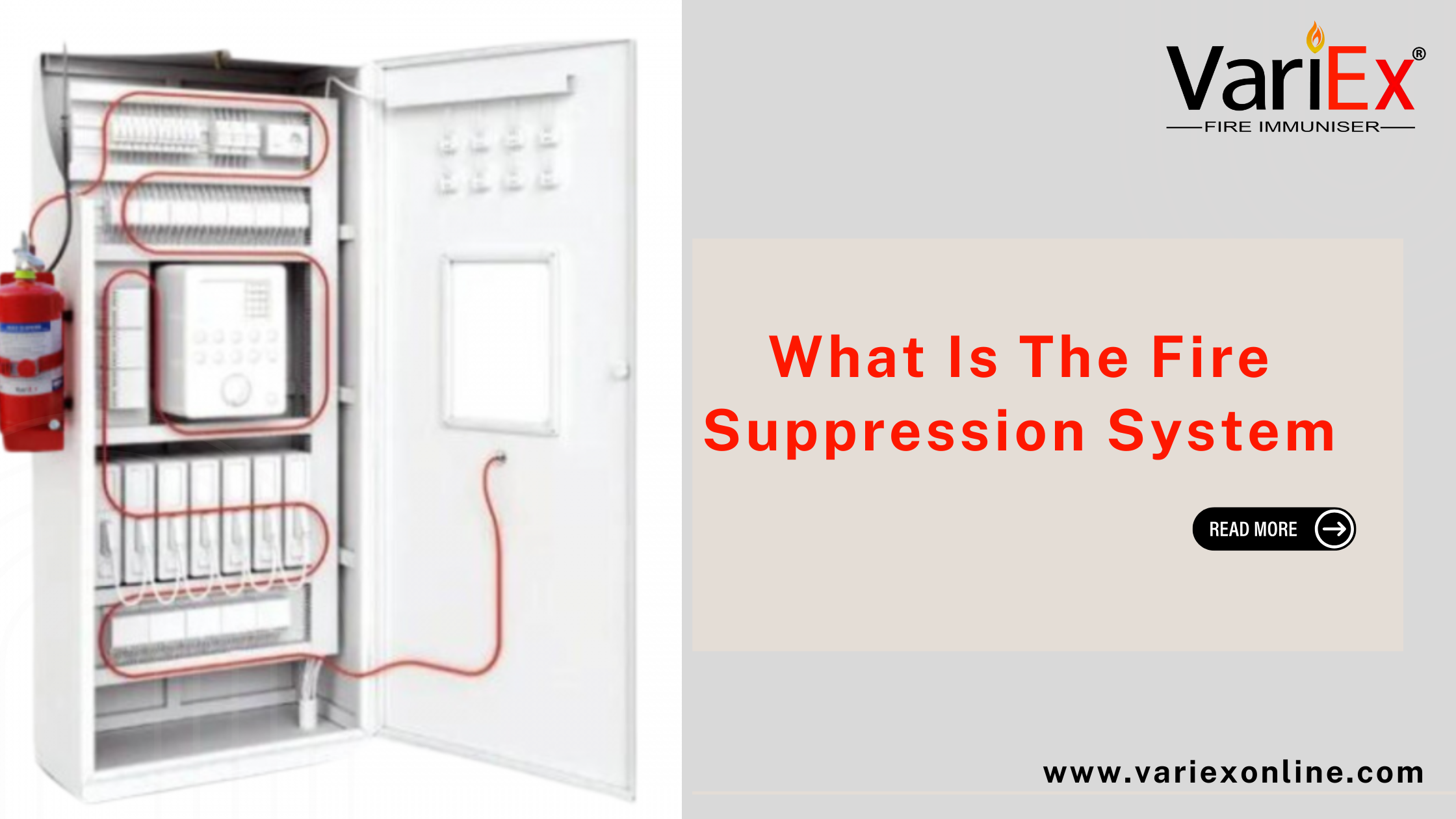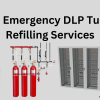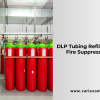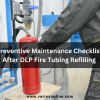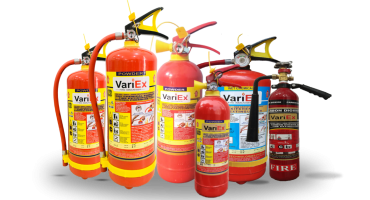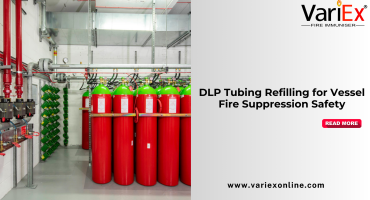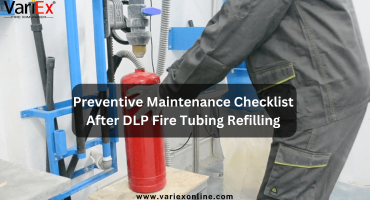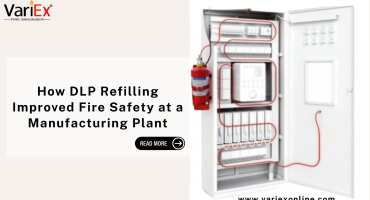![]()
Fire Immuniser
+91-7829629111
Email: info@variex.in
Varistor Technologies Pvt. Ltd.
Block-1, First Floor, Ardente Office One, Hoodi Circle, ITPL Main Road, Bengaluru, Karnataka 560048, IN
What Is The Fire Suppression System
What Is The Fire Suppression System
Fire poses one of the most devastating threats to property and life. That's where fire suppression systems come into play. These systems are designed to detect, control, and extinguish fires automatically, often before the fire department even arrives. From commercial kitchens to data centers and factories, these systems are crucial for early intervention and minimizing fire damage.
This article dives deep into what a fire suppression system is, how it works, its types, advantages, applications, and more. Whether you're a business owner, facilities manager, or just curious about fire safety, this guide is for you.
Table: Overview of Fire Suppression Systems
| Type of System | Suppression Agent | Best For | Example Locations |
|---|---|---|---|
| Wet Pipe Sprinklers | Water | General-purpose fire control | Offices, schools, warehouses |
| Dry Chemical Systems | Powdered chemicals (e.g., ABC powder) | Rapid flame knockdown | Gas stations, paint booths |
| Clean Agent Systems | Gaseous chemicals (e.g., FM-200, Novec 1230) | Sensitive electronics | Data centers, server rooms |
| CO₂ Systems | Carbon Dioxide | Non-occupied equipment rooms | Industrial equipment, turbines |
| Foam Systems | Aqueous Film Forming Foam | Flammable liquid hazards | Aircraft hangars, oil refineries |
| Water Mist Systems | Fine water droplets | Heat-sensitive areas | Hotels, museums, archives |
What Is a Fire Suppression System?
A fire suppression system is an engineered group of units built to detect and extinguish fires through the release of an extinguishing agent. Unlike a basic fire sprinkler system, fire suppression systems can use a variety of substances—water, chemical, or gaseous agents—to control or put out a fire.
These systems are often installed in places where traditional fire sprinklers may cause more harm than good, like in server rooms or places storing valuable documents.
How Does a Fire Suppression System Work?
The working mechanism varies depending on the type of suppression system, but the process typically involves:
-
Detection: Smoke, heat, or flame detectors sense the presence of a fire.
-
Alert: The system may trigger an alarm to alert people in the vicinity.
-
Activation: The suppression agent is released, either manually or automatically.
-
Suppression: The agent extinguishes or controls the fire to prevent its spread.
In advanced systems, it can also alert fire departments and automatically shut down HVAC systems to prevent smoke circulation.
Key Components of a Fire Suppression System
Understanding the parts involved helps appreciate how these systems work efficiently:
-
Detectors: Smoke, heat, and flame sensors to identify fire early.
-
Control Panel: The brain of the system that analyzes data and triggers suppression.
-
Release Mechanism: Valves, nozzles, or pipes that discharge the extinguishing agent.
-
Extinguishing Agent: Water, foam, gas, or dry chemical used to suppress the fire.
-
Manual Activation Option: In case the automatic system fails.
Types of Fire Suppression Systems
Here’s a closer look at the most common types of fire suppression systems:
1. Wet Chemical Systems
Primarily used in commercial kitchens, these systems utilize a wet chemical agent to suppress grease fires. They’re fast-acting and often installed above cooking appliances.
2. Clean Agent Fire Suppression
This system uses gaseous agents like FM-200, Novec 1230, or Inergen, which leave no residue and are safe for electronics. Ideal for:
-
Data centers
-
Server rooms
-
Control rooms
3. Dry Chemical Suppression
This system releases a powdered chemical, typically ABC powder, to knock out flames quickly. Common in industrial settings like:
-
Paint booths
-
Fuel storage areas
4. Carbon Dioxide (CO₂) Systems
These displace oxygen to suffocate the fire. They're incredibly effective but should be used in non-occupied areas due to asphyxiation risks.
5. Water Mist Systems
These systems use fine droplets of water to suppress heat and flame without damaging equipment or soaking surroundings. They’re good for:
-
Historic buildings
-
Archives
-
Hospitals
Where Are Fire Suppression Systems Used?
Fire suppression systems are used in a wide variety of settings. Some of the most common include:
-
Commercial kitchens (for grease fires)
-
Server rooms (where water can damage electronics)
-
Manufacturing plants (flammable materials)
-
Aircraft hangars
-
Libraries and museums (protection of irreplaceable items)
-
Oil & gas facilities
Each environment requires a system tailored to its specific risks and materials.
Benefits of Fire Suppression Systems
Installing a fire suppression system offers numerous advantages:
-
Early Detection and Response: Suppresses fires before they escalate.
-
Asset Protection: Protects valuable equipment, documents, and inventory.
-
Minimized Downtime: Reduces disruption to business operations.
-
Life Safety: Increases the chances of safe evacuation.
-
Insurance Incentives: May reduce premiums and increase policy options.
Compliance and Legal Requirements
Fire suppression systems often must comply with standards such as:
-
NFPA (National Fire Protection Association) codes
-
OSHA (Occupational Safety and Health Administration) regulations
-
Local building and fire department codes
Failing to comply can result in fines, increased liability, and insurance issues.
Installation and Maintenance
Installing a suppression system should always be done by certified professionals. Key considerations include:
-
Hazard analysis
-
Agent selection
-
Design and engineering
-
Testing and commissioning
Routine maintenance and inspections are essential to ensure reliability. NFPA recommends inspections semi-annually or annually, depending on the system.
Choosing the Right Fire Suppression System
To choose the right system, consider the following:
-
What kind of fire risks exist?
-
Are there people usually present in the area?
-
Would water damage be more dangerous than fire damage?
-
What’s your budget?
-
What are the regulatory requirements for your industry?
Consulting with a fire protection engineer is often the best route for a tailored solution.
Limitations and Risks
While fire suppression systems are life-saving tools, they’re not foolproof. Potential issues include:
-
False Activations: May damage sensitive equipment or halt production.
-
Agent Storage Risks: Some chemicals are toxic or pressurized.
-
Upfront Cost: Installation and system design can be expensive.
However, these are small trade-offs compared to the devastating impact of an uncontrolled fire.
Environmental Considerations
Certain suppression agents—especially older halon-based gases—have been found to deplete the ozone layer. Modern systems now use eco-friendly agents like Novec 1230, which are non-toxic and have a low Global Warming Potential (GWP).
The Future of Fire Suppression Systems
Emerging trends and innovations include:
-
AI-Powered Detection: Using machine learning to identify false alarms or detect fire patterns early.
-
IoT Integration: Real-time data sharing with mobile apps and central monitoring.
-
Eco-Friendly Agents: Continued shift toward sustainable suppression agents.
Conclusion
A fire suppression system is a vital component in any comprehensive fire safety strategy. Whether you're protecting data, people, or irreplaceable assets, having the right system in place can mean the difference between minor damage and total destruction.
With technologies advancing and stricter regulations in place, there's no better time to invest in a fire suppression system that suits your specific needs. Don’t wait for a disaster to act—fire safety starts with prevention and smart planning.
Frequently Asked Questions
Fire sprinkler systems use water and are suitable for general fires. Fire suppression systems can use gas, chemicals, or foam and are better for sensitive or hazardous areas.
Yes, most modern clean agents like FM-200 and Novec 1230 are non-toxic and safe for occupied areas.
Typically, they should be inspected every 6 to 12 months, but frequency may vary based on system type and local regulations.
No. These systems must be designed, installed, and maintained by certified professionals to ensure compliance and effectiveness.
Not all do. Clean agent and water mist systems are designed specifically to suppress fire without harming sensitive electronics.
Final Say
At VariEx.in and VariexOnline.com, we specialize in supplying and installing top-quality fire fighting systems and equipment. From fire extinguishers to advanced suppression systems, we offer comprehensive solutions tailored to your needs. Our experienced team ensures precise installation and maintenance for optimal safety.
Trust VariEx for reliable fire protection. Contact us online or call 7829629111 to learn more.
We specialize in manufacturing, supplying, and distributing a comprehensive range of fire fighting equipment, including state-of-the-art fire extinguishers. Read our most searched blogs and find interesting information on topics such as how to use a fire extinguisher, how to calculate fire fighting water tank capacity, fire extinguisher refilling, obtaining a Fire NOC, understanding fire fighting systems, types of fire protection systems, the fire hydrant system, and the fire sprinkler system. These resources provide essential knowledge for ensuring safety and compliance with fire safety regulations. Additionally, you can explore guides on the maintenance of fire protection equipment, the latest advancements in fire safety technology, and best practices for fire risk assessment and management.
Our expertise extends to fire alarm systems, fire hydrant systems, and fire suppression systems, including fire sprinklers. Each product meets rigorous international standards for reliability and performance, ensuring effective fire safety products tailored to diverse applications and industries. Additionally, we are providing Fire Extinguisher Refilling and AMC services to ensure ongoing maintenance and operational readiness of fire safety equipment.


